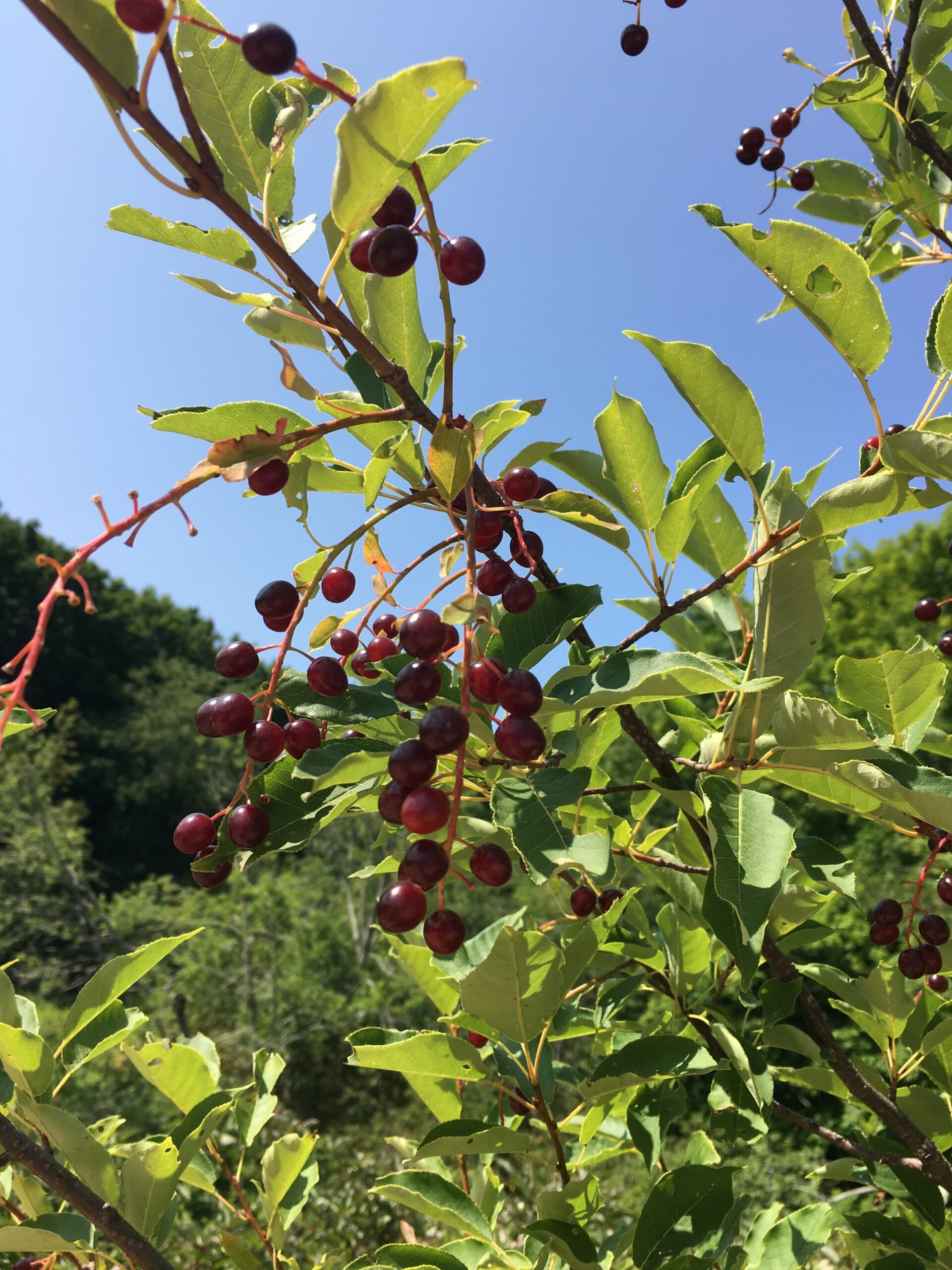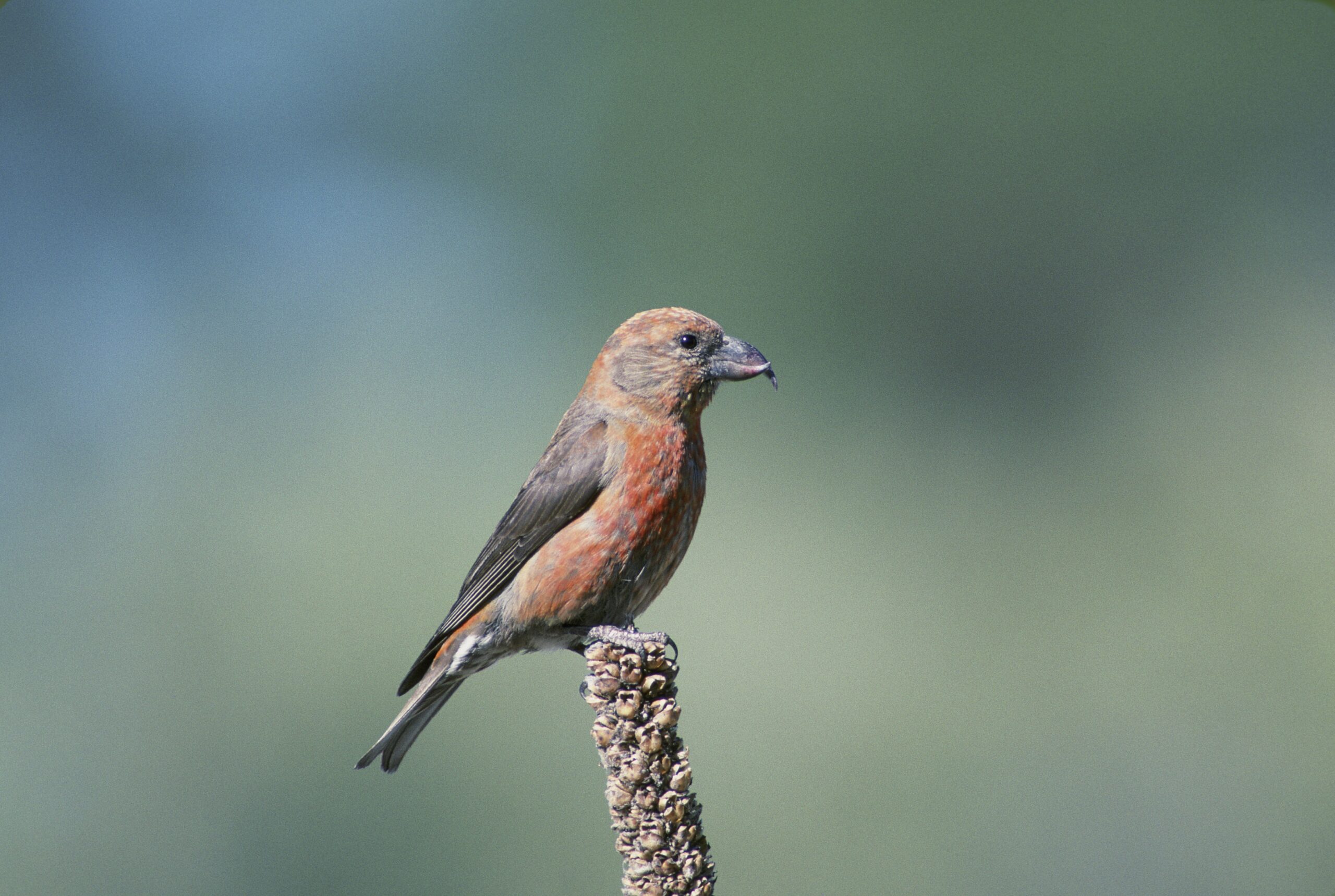
Courtesy US FWS
David Menke, Photographer
perhaps a gray crowned rosy finch, or green tail towhee. The old standbys never disappoint- juncos, various finch species, red breasted nuthatch, black capped & mountain chickadees.

Courtesy & Copyright
Stephen Peterson, Photographer
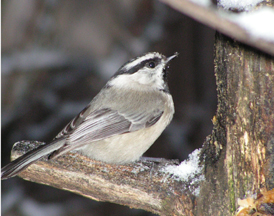 A Mountain Chickadee
A Mountain Chickadee
Courtesy & Copyright
Stephen Peterson, Photographer
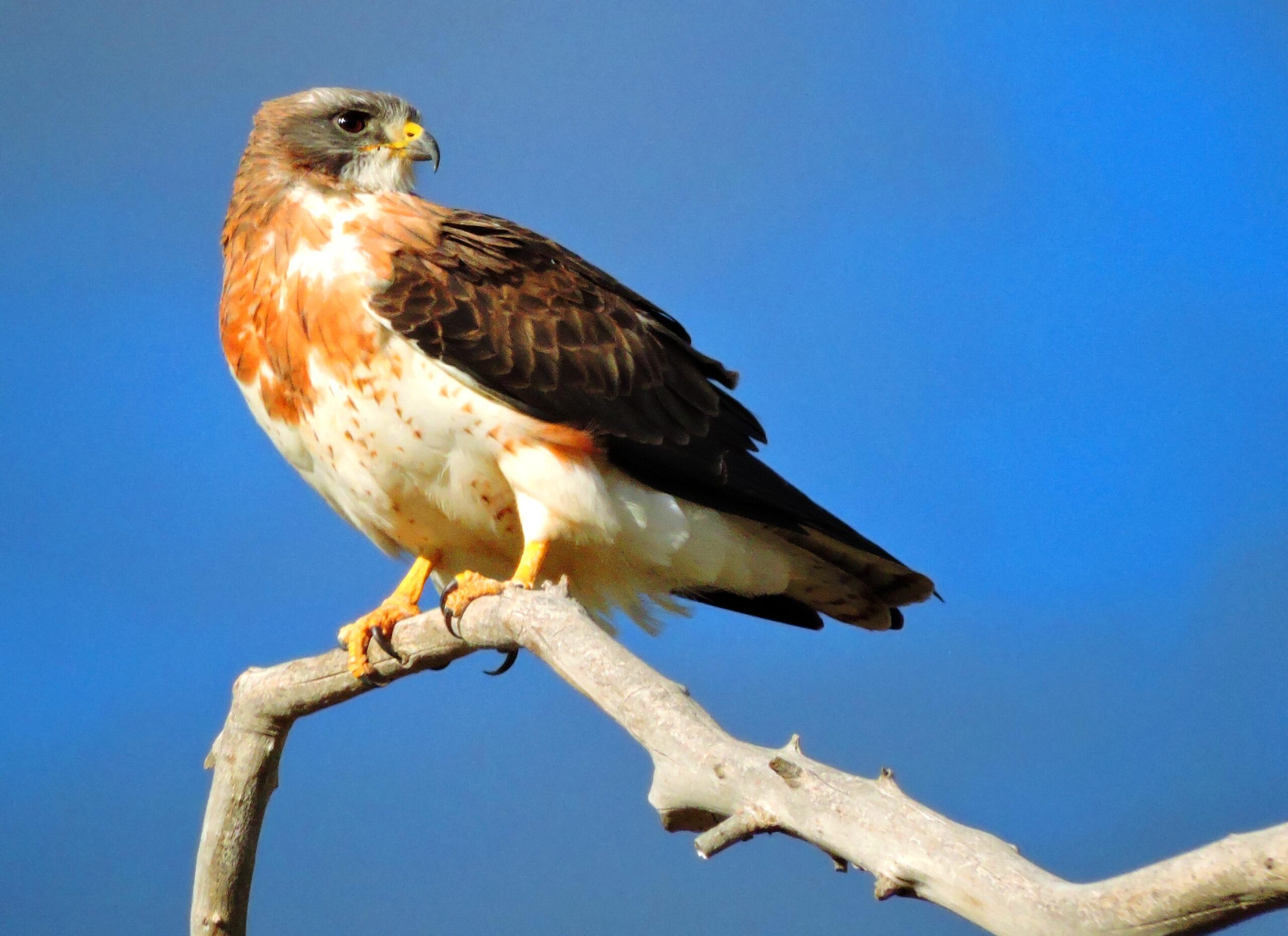 Swainsons Hawk
Swainsons Hawk
Buteo swainsoni
Courtesy Patrick Meyers, US NPS, Photographer
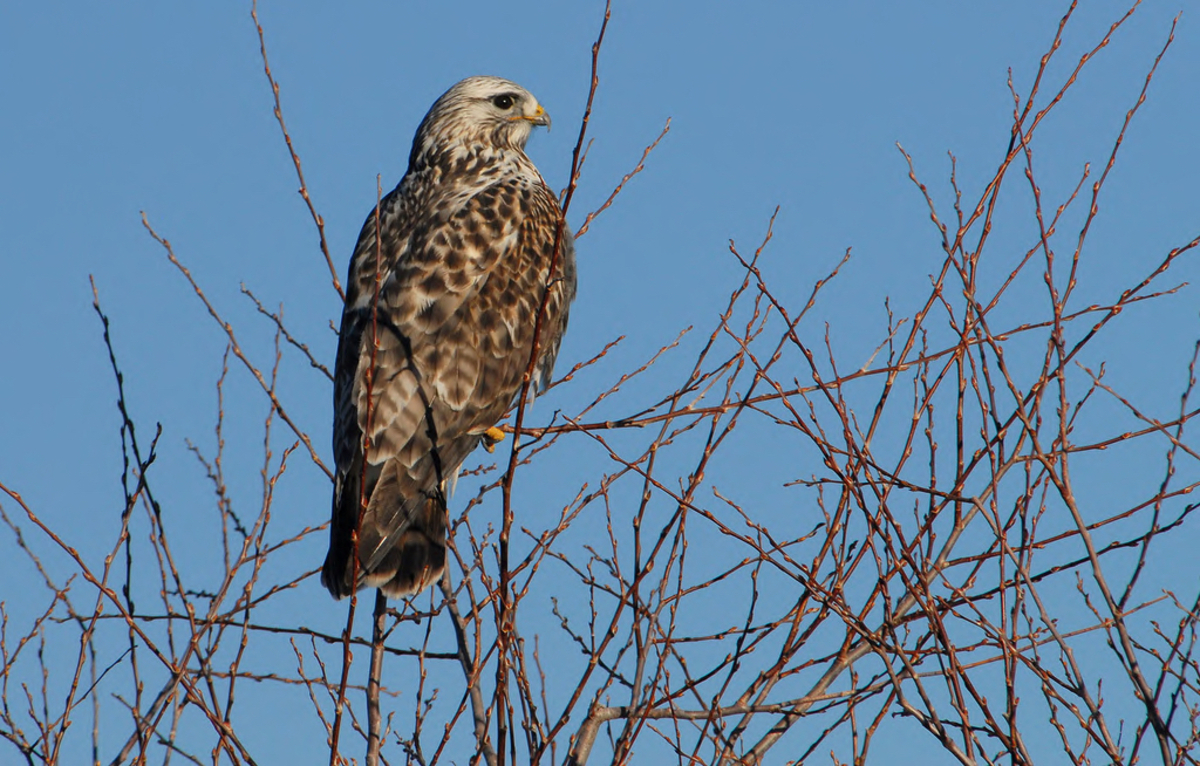 Rough-Legged Hawk
Rough-Legged Hawk
Buteo lagopus
Courtesy US FWS
 Snowy Owl
Snowy Owl
Bubo-scandiacus
Courtesy US FWS
Alex Galt, Photographer
Our winter birds are primarily seed eaters and berry eaters. Some exceptions are the woodpecker clan that attack our suet block, as do many of the seed eaters, and of course the raptors, who love to eat my feeder birds.
One non-feeder song bird that always brightens our day is the American dipper on our backyard creek. These little bundles of joy, or Rocky Mountain miniture pinguins if you prefer, do fine without our winter treats. They are full of joy swimming in freezing waters to pursue their prey- insect larva, small fish, and crustaceans. I’ve known them to sing their beautiful river song in the height of whiteout blizzards.
Many raptors have headed south, especially the Swainson hawks for which virtually the entire N. American flock winters in Argentina. Others move into our valley from further north- rough legged hawks, occassional snowy owls, snow buntings, and rarely a great gray owl, all raising spirits and engendering excitement by our birding community.
We’ve had but one green-tailed towhee in the 38 years we’ve resided in Smithfield Canyon. This delight acted unsure of where it was supposed to be. Skulcing, timid, it would steal in hesitant of its next move, where its spottoed towhee cousin was at ease, sure of its footing as it gobbled seed from the deck.
Being from the midwest, eastern bluejays elicite a flush of Michigan memories. Haughty and eye popping beauty, they too are less sure of their place and act quite timid and flighty at the feeder, quite opposite from their racous behavior back home.
We were blessed by immature Harris sparrows during our first three winters here. These elegant sparrows wear a striking black necklace, whick disppears with maturity. Will they ever return?
A tiny raptor brought great excitement. We noticed a Northern pygmy owl sitting comfortably 5 feet from our window, hoping to surprise a finch or junco. Fortunately for the songsters, it was discovered and the alarm sounded. Following 15 minutes of waiting, its patience subsided and it disappeared, never to be seen again!
Last winter we saw our first wild turkeys on the deck. Curious and comical, they would gaze in our living room window, wishing they had access to its contents. We learned even turkeys can be quite elegant, as they paraded on our deck railing.
Occasionally, great flocks of evening grosbeaks bless us with their startling beauty and abundance. We have yet to see gray crowned rosy finch or red crossbills. Perhaps this will be the winter!!
This is Jack Greene, for Bridgerland Audubon Society, and wild for Utah’s winter arrivals!
Credits:
Pictures: Courtesy US FWS,Photographers noted below each image
Contains Sound: Courtesy Kevin Colver, https://wildstore.wildsanctuary.com/collections/special-collections
Text: Jack Greene, Bridgerland Audubon Society/Utah State University Sustainability
Additional Reading:
Jack Greene’s Postings on Wild About Utah, https://wildaboututah.org/author/jack/
Black-capped Chickadee, All About Birds, Cornell Lab of Ornithology, https://www.allaboutbirds.org/guide/Black-capped_Chickadee/id/
Mountain Chickadee, All About Birds, Cornell Lab of Ornithology, https://www.allaboutbirds.org/guide/Mountain_Chickadee/id
Red-breasted Nuthatch, All About Birds, Cornell Lab of Ornithology, https://www.allaboutbirds.org/guide/Red-breasted_Nuthatch/id
Northern Pygmy Owl, All About Birds, Cornell Lab of Ornithology, https://www.allaboutbirds.org/guide/Northern_Pygmy-Owl/id
Swainson’s Hawk, All About Birds, Cornell Lab of Ornithology, https://www.allaboutbirds.org/guide/Swainsons_Hawk/id
Rough-legged Hawk, All About Birds, Cornell Lab of Ornithology, https://www.allaboutbirds.org/guide/Rough-legged_Hawk/id
Gray-crowned Rosy Finch, All About Birds, Cornell Lab of Ornithology, https://www.allaboutbirds.org/guide/Gray-crowned_Rosy-Finch/id
Snowy Owl, All About Birds, Cornell Lab of Ornithology, https://www.allaboutbirds.org/guide/Snowy_Owl/id








